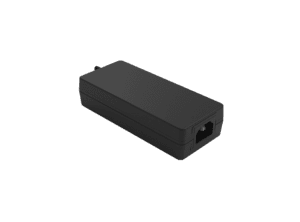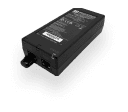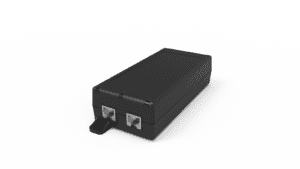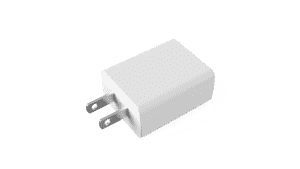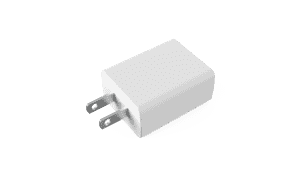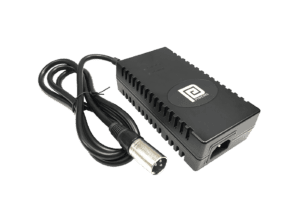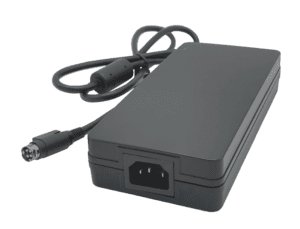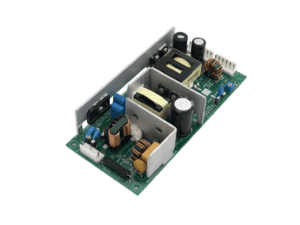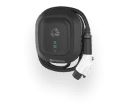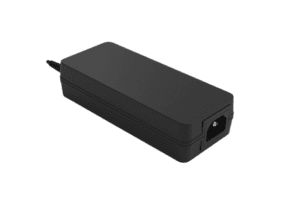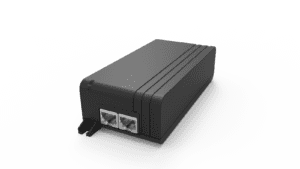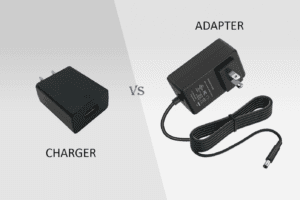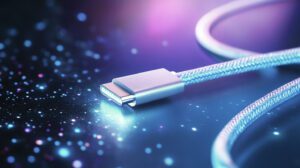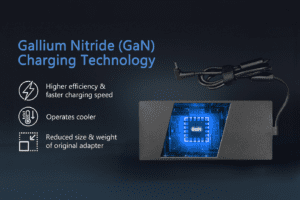BLOG
USB-C Charger: Shaping the Future of the Tech World
Table of contents

For the USB-C adapter, the year 2024 might be remembered as a turning point in the history of tech connectivity. With tech giants like Apple officially embracing the USB-C revolution with their new iPhone 15 series, and other established names like Lenovo doubling down on USB-C integration in their latest laptops, a wave of change is upon the tech industry. It’s a shift that promises convenience, better integration between devices and even a more environmentally sustainable future.
I think now is the time for consumers to delve deeper into understanding USB-C technology and find out what it means for our favorite electronics.
The Historical Rise of USB-C
USB-C is rapidly approaching its 10th anniversary, and has already cemented its place as the standard for virtually every new smartphone, laptop, camera, and tablet. While Apple’s recent decision to ditch the Lightning port on the iPhone 15 drew much attention, many may be surprised to learn that Apple was actually among the key players in USB-C’s development. The USB Implementers Forum (USB-IF), including Apple, introduced the USB Type-C specification in 2014 as part of the USB 3.1 standard.
The goal behind the USB-C was to overcome the limitations of previous USB technology and it boasts a smaller, reversible design, blazing-fast data transfer speeds, and enhanced USB-C charging speeds. While no single inventor can be credited with the USB Type-C, its development represented a collaborative effort among industry giants, all working towards creating a more versatile and user-friendly connectivity standard for the future.
What is USB-C and what is a USB-C Adapter?
USB-C, or USB Type-C is rapidly becoming the standard connection / connector for every modern electronic device. A USB connector is a small, oval-shaped plug with a reversable design, meaning that you can plug it in either way, up or down, eliminating any frustration in trying to insert the connector the right way. As USB-C becomes the main standard for electronic devices, we’ll see fewer adapter cables with different plugs on each end, for example; USB A to USB mini B, USB A to USB micro B, USB-C to USB-A or USB-C to HDMI.
USB-C adapters are accessories that leverage the USB-C connector to enable connectivity between older devices with different interfaces. These adapters typically feature a USB-C connector on one end and various ports on the other, such as USB-A, HDMI, VGA, Ethernet, and SD card slots, among others. They serve as bridges, allowing users to connect their USB-C-enabled devices to peripherals or displays that utilize different connection standards. For example, if you have a laptop with only USB Type-C ports but need to connect to a USB-A flash drive or an HDMI monitor, you can use a USB-C adapter to make the connection possible.
What Are The Benefits of USB-C Adapters?
Why is USB-C such a game-changer, and how does it impact both the tech industry and consumers? The transition to USB-C as the universal standard for our beloved gadgets will bring forth numerous benefits:
Universal Compatibility
USB-C is becoming increasingly universal across all devices, including smartphones, tablets, laptops, and accessories. Take the new iPhone 15 and Android devices as examples. You can connect directly to any USB Type-C device, such as battery packs, (MIDI) keyboards, microphones, headphones, or DSLR cameras. Imagine instantly transferring all your photos directly to your smartphone and using it not only as a storage hub but also as a vibrant screen to view and edit your photos.
Enhanced Versatility
USB-C is a multifunctional port that can support various protocols, including USB, Thunderbolt, DisplayPort, and more. This versatility allows users to connect their devices to a wide range of peripherals such as monitors, external storage, and docking stations with a single cable.
Reduced Environmental Impact
One of the key reasons why big tech powerhouses like Apple are moving to USB-C is the push from European governments who are passing strict legislation to reduce e-waste by enforcing USB-C as the universal connector for all devices. A one-cord-fits-all approach to charge and transfer data from both ends, no longer needing multiple cords, dongles, or adapters. Plus, USB-C chargers and cords are slimmer and lightweight, hence further reducing the environmental footprint without sacrificing functionality.
Faster Data Transfer Speeds
USB-C supports faster data transfer speeds compared to older USB standards. USB4 which uses the USB-C connector, can transfer data at up to 80 Gbps, allowing for quicker file transfers and backups.
Increased Power Delivery
A USB-C charger supports higher power delivery, enabling faster charging for devices. With USB Power Delivery (USB PD), devices can negotiate power requirements and deliver higher wattage for faster charging, making it convenient for USB-C charging laptops, tablets, and smartphones.
Overall, USB Type-C offers improved convenience, speed, versatility, and reduced environmental impact, making it a preferred choice for many consumers and manufacturers alike.
The Future is USB-C
As USB-C slowly dominates the tech landscape, it’s worth pondering its potential impact on our digital lives. In contrast, the benefits seem clear – a single, universal connector for charging, transferring data, and connecting to displays truly seems to be the solution to the cable clutter dilemma. But just how more beneficial could USB-C possibly be in the future?
Imagine where every single device, from smartphones and laptops to tablets and smart home gadgets can seamlessly connect with each other through USB-C? Only needing one singular cable to always carry with you. Seems like a dream come true does it not? With unified standards, companies could focus on innovation instead of compatibility.
Faster Data Speeds
We should expect even faster data transfer speeds from USB-C compared to current standards. This could involve advancements in USB protocols or the integration of technologies like USB4, which offers speeds of up to 40 Gbps, enabling quicker file transfers and seamless 4K or even 8K video streaming.
Enhanced Power Delivery
Enhanced power delivery is certainly on the horizon as USB Power Delivery (USB PD) continues to evolve, offering higher wattages and more efficient charging capabilities. This could enable faster charging for a wider range of devices, including laptops, tablets, and even EV, reducing reliance on bulky power adapters.
New Compatibility Expansion
New compatibility expansion will continue as big tech moves forward in updating their devices to the USB-C standard. USB-C tech could enable seamless compatibility with emerging technologies such as augmented reality (AR), virtual reality (VR), and high-resolution displays, fostering a more immersive and interconnected digital experience.
In conclusion, the true impact of USB-C will depend on its successful implementation and continued development. If adopted thoughtfully and with a focus on open standards and innovation, USB-C has the potential to streamline our digital lives, foster collaboration within the tech industry, and pave the way for a more interconnected and exciting future. The journey has just begun, and the choices we make today will determine how profoundly USB-C will shape the future of technology.
Phihong: The Leading Manufacturer of USB-C Chargers
Now that we shed some light on the road where the electronics industry is headed, it’s imperative for electronics brands to align their future product designs with the universal standard that will be USB-C.
For more than five decades, Phihong has served as a trusted partner of Fortune 500 OEMs across telecom, datacom, personal electronics, and industrial sectors. Spearheading the forefront of USB-C innovation, Phihong emerges as an indispensable asset in the production of cutting-edge USB-C chargers for discerning enterprises seeking excellence.
Phihong exemplifies a steadfast commitment to innovation with their latest USB-C chargers. Its UL Listed USB-C Power Delivery 3.0 products are available from 18W to 100W of power, ensuring optimal performance and safety. Equipped with USB-C receptacles and fortified with over-voltage, over-current, short circuit, and over-temperature protection mechanisms, Phihong’s chargers epitomize reliability and user safety
Phihong’s USB-C Adapter Products
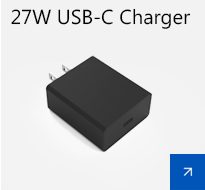 |
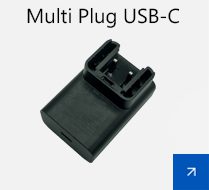 |
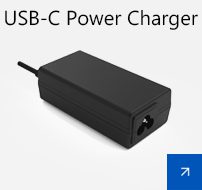 |
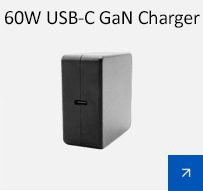 |
CLIENT'S QUOTE
Phihong's Power-Over-Ethernet solutions have transformed our network, boosting efficiency and reducing costs. Their seamless integration has simplified both installation and maintenance.
Explore More with Phihong USA
As we conclude our exploration of USB-C adapter technology, it’s clear how these innovations are shaping the future of the tech world. Phihong USA is leading this technological advancement, offering a diverse range of USB-C power solutions tailored to the evolving demands of modern industries.
Phihong USA’s extensive product lineup includes:
- Power over Ethernet (PoE) Solutions: Delivering reliable power and data transmission over a single cable, ideal for simplifying network installations and reducing costs.
- AC/DC Adapters and Power Supplies: From compact adapters to industrial-grade power supplies, Phihong provides solutions that ensure efficiency and reliability in various applications.
- Battery Chargers: Customizable chargers for lithium-ion and lead-acid batteries, supporting a wide range of power requirements for mobility and industrial applications.
- Medical Power Supplies: Specialized power solutions designed to meet the stringent requirements of the healthcare industry, ensuring safety and reliability.
Phihong USA is committed to innovation and excellence, continually developing products that meet the highest standards of performance and reliability. Their global reach and dedication to customer support make them a trusted partner in powering the future.
Here are some useful links to explore Phihong USA’s offerings further and bring in new potential clients:
Visit Phihong USA to discover how their advanced power solutions can support your business needs. Whether you’re looking to upgrade your network, or find reliable power supplies, Phihong USA has you covered.
By choosing Phihong USA, you’re partnering with a leader in power technology, ensuring your operations run smoothly and efficiently with top-tier power solutions.

Contact Our Team Today!
Our dedicated sales team and international partners are prepared to support you with your latest projects and initiatives globally.
FAQ
What specific advantages does USB-C offer compared to previous USB standards?
USB-C offers several advantages over earlier USB standards, primarily its reversible design, which eliminates the frustration of trying to plug in the connector the right way. Additionally, USB-C supports much higher data transfer speeds, up to 40 Gbps with USB4, significantly reducing the time needed for file transfers. It also enables greater power delivery, allowing devices to charge faster and more efficiently—up to 100W with USB Power Delivery. This versatility means that a single USB-C cable can handle multiple functions, including data transfer, video output, and charging, simplifying connectivity and reducing the clutter of various cables and adapters.
How will the shift to USB-C impact consumers in everyday use?
The shift to USB-C is set to simplify consumers’ everyday tech interactions. With USB-C becoming the standard for most new devices, consumers will enjoy greater convenience through universal compatibility, meaning fewer cables and adapters are needed. This shift will enable users to connect various devices—such as smartphones, laptops, and peripherals—using the same type of cable, reducing frustration and clutter. Furthermore, the increased power delivery capabilities will lead to faster charging times, allowing users to spend less time tethered to a power source and more time using their devices. Overall, this transition will create a more efficient and user-friendly experience.

